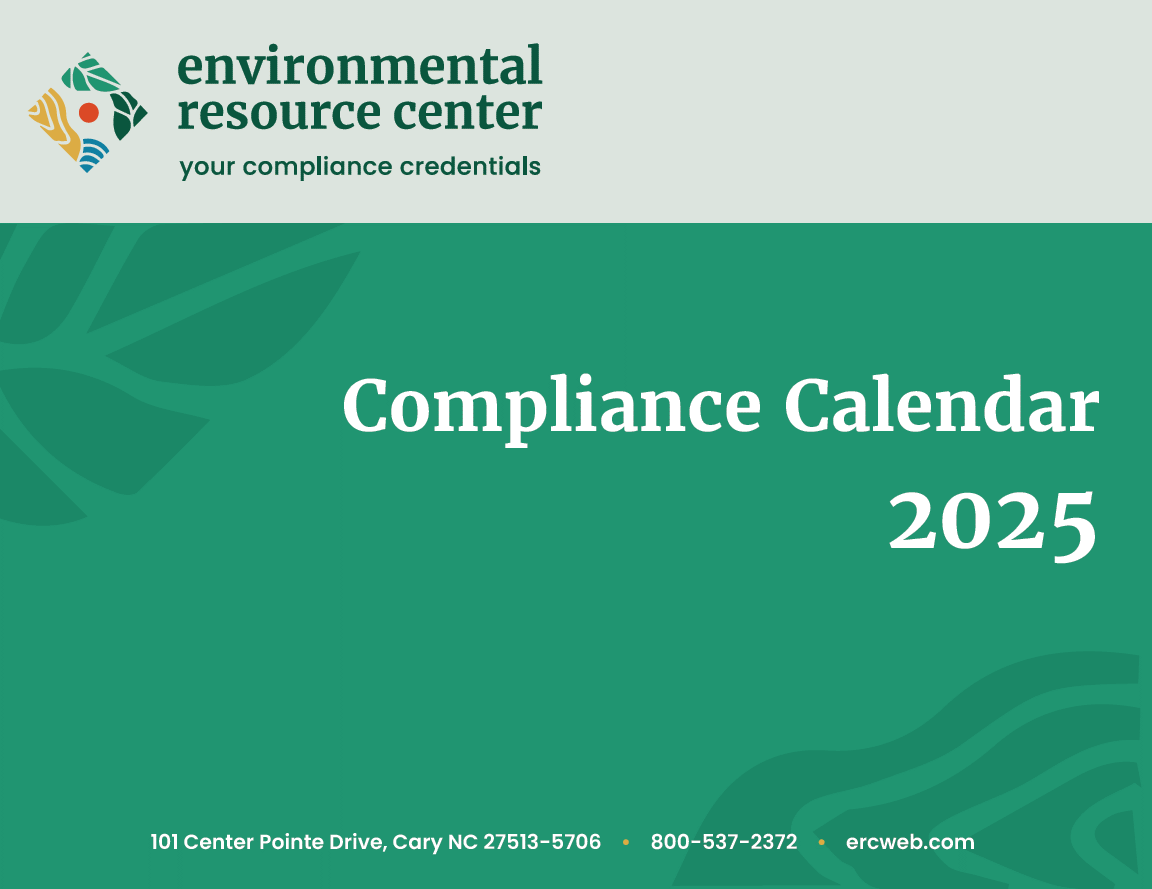 U.S. Environmental Protection Agency (EPA) Administrator Lee Zeldin outlined upcoming agency action to address Per- and Polyfluoroalkyl Substances (PFAS). In this suite of actions, Administrator Zeldin announced a long list that included in part the designation of an agency lead for PFAS, the creation of effluent limitations guidelines (ELGs) for certain PFAS to stop these forever chemicals from entering drinking water systems, and initiatives to engage with Congress and industry to establish a clear liability framework that ensures the polluter pays and passive receivers are protected. In line with Administrator Zeldin’s Powering the Great American Comeback initiative, EPA’s work in this space will advance Pillar 1: Clean Air, Land, and Water for Every American, and Pillar 3: Permitting Reform, Cooperative Federalism, and Cross-Agency Partnership.
U.S. Environmental Protection Agency (EPA) Administrator Lee Zeldin outlined upcoming agency action to address Per- and Polyfluoroalkyl Substances (PFAS). In this suite of actions, Administrator Zeldin announced a long list that included in part the designation of an agency lead for PFAS, the creation of effluent limitations guidelines (ELGs) for certain PFAS to stop these forever chemicals from entering drinking water systems, and initiatives to engage with Congress and industry to establish a clear liability framework that ensures the polluter pays and passive receivers are protected. In line with Administrator Zeldin’s Powering the Great American Comeback initiative, EPA’s work in this space will advance Pillar 1: Clean Air, Land, and Water for Every American, and Pillar 3: Permitting Reform, Cooperative Federalism, and Cross-Agency Partnership. “I have long been concerned about PFAS and the efforts to help states and communities dealing with legacy contamination in their backyards. With today’s announcement, we are tackling PFAS from all of EPA’s program offices, advancing research and testing, stopping PFAS from getting into drinking water systems, holding polluters accountable, and providing certainty for passive receivers. This is just a start of the work we will do on PFAS to ensure Americans have the cleanest air, land, and water,” said EPA Administrator Zeldin.
These actions are guided by the following principles: strengthening the science, fulfilling statutory obligations and enhancing communication, and building partnerships. With this approach, EPA will provide the foundation and investment necessary for a toolbox that will help states and communities dealing with PFAS contamination. This list is the first, not the last, of all decisions and actions EPA will be taking to address PFAS. There will be more to come in the future across EPA’s program offices to help communities impacted by PFAS contamination.
Strengthening the Science
- Designate an agency lead for PFAS to better align and manage PFAS efforts across agency programs
- Implement a PFAS testing strategy under Toxic Substances Control Act (TSCA) Section 4 to seek scientific information informed by hazard characteristics and exposure pathways
- Launch additional efforts on air related PFAS information collection and measurement techniques related to air emissions
- Identify and address available information gaps where not all PFAS can be measured and controlled
- Provide more frequent updates to the PFAS Destruction and Disposal Guidance—changing from every three years to annually—as EPA continues to assess the effectiveness of available treatment technologies
- Ramp up the development of testing methods to improve detection and strategies to address PFAS
Fulfilling Statutory Obligations and Enhancing Communication
- Develop effluent limitations guidelines (ELGs) for PFAS manufacturers and metal finishers and evaluate other ELGs necessary for reduction of PFAS discharges
- Address the most significant compliance challenges and requests from Congress and drinking water systems related to national primary drinking water regulations for certain PFAS
- Determine how to better use RCRA authorities to address releases from manufacturing operations of both producers and users of PFAS
- Add PFAS to the Toxic Release Inventory (TRI) in line with Congressional direction from the 2020 National Defense Authorization Act
- Enforce Clean Water Act and TSCA limitations on PFAS use and release to prevent further contamination
- Use Safe Drinking Water Act authority to investigate and address immediate endangerment
- Achieve more effective outcomes by prioritizing risk-based review of new and existing PFAS chemicals
- Implement section 8(a)7 to smartly collect necessary information, as Congress envisioned and consistent with TSCA, without overburdening small businesses and article importers.
- Work with Congress and industry to establish a clear liability framework that operates on polluter pays and protects passive receivers
Building Partnerships
- Advance remediation and cleanup efforts where drinking water supplies are impacted by PFAS contamination
- Work with states to assess risks from PFAS contamination and the development of analytical and risk assessment tools
- Finish public comment period for biosolids risk assessment and determine path forward based on comments
- Provide assistance to states and tribes on enforcement efforts
- Review and evaluate any pending state air petitions
- Resource and support investigations into violations to hold polluters accountable
In the process of developing and taking action on a number of these items, Administrator Zeldin personally heard from Members of Congress on passive receiver issues where local water utilities will foot the bill for contamination and pass those costs onto consumers. This mindset and the need for a polluter pays model has guided a lot of the work to be done at EPA in the future.
 U.S. Transportation Secretary Sean P. Duffy announced that the Pipeline and Hazardous Materials Safety Administration’s (PHMSA) is seeking comment to inform a rulemaking proposal to update decades old regulations for liquified natural gas (LNG) facilities, fast-track new LNG infrastructure projects, expand domestic export capacity, and grow the small-scale LNG market. This is one of several “Unleashing American Energy” rulemakings.
U.S. Transportation Secretary Sean P. Duffy announced that the Pipeline and Hazardous Materials Safety Administration’s (PHMSA) is seeking comment to inform a rulemaking proposal to update decades old regulations for liquified natural gas (LNG) facilities, fast-track new LNG infrastructure projects, expand domestic export capacity, and grow the small-scale LNG market. This is one of several “Unleashing American Energy” rulemakings.The recent Advance Notice of Proposed Rulemaking (ANPRM) for Amendments to Liquefied Natural Gas (LNG) Facilities regulations is the first in a series of PHMSA actions to implement the President’s “Unleashing American Energy” Executive Order.
The full text of the LNG facilities ANPRM will be available in the Federal Register on publication. PHMSA has posted an unofficial version of the ANPRM on its website, pending publication in the Federal Register. All other updates will be made available on PHMSA’s website once submitted to the Federal Register.
 EPA has made recommendations for mitigating risks to human health and the environment associated with dicrotophos, a pesticide used for controlling arthropod pests on cotton. EPA’s Interim Registration Review Decision for dicrotophos (PDF) explains that exposure to the substance may lead to neurotoxicity. The agency’s news release announcing the publication of its decision adds that there are “human health risks of concern” for occupational handlers applying dicrotophos and bystanders from spray drift, as well as ecological risks for birds, mammals, terrestrial invertebrates, and aquatic invertebrates. To mitigate these risks, EPA recommends reducing the rate of aerial application of dicrotophos, implementing buffers between application areas and bystanders, minimizing runoff, including pollinator stewardship language on product labels, and adding guidance on labels to instruct users in reporting ecological incidents.
EPA has made recommendations for mitigating risks to human health and the environment associated with dicrotophos, a pesticide used for controlling arthropod pests on cotton. EPA’s Interim Registration Review Decision for dicrotophos (PDF) explains that exposure to the substance may lead to neurotoxicity. The agency’s news release announcing the publication of its decision adds that there are “human health risks of concern” for occupational handlers applying dicrotophos and bystanders from spray drift, as well as ecological risks for birds, mammals, terrestrial invertebrates, and aquatic invertebrates. To mitigate these risks, EPA recommends reducing the rate of aerial application of dicrotophos, implementing buffers between application areas and bystanders, minimizing runoff, including pollinator stewardship language on product labels, and adding guidance on labels to instruct users in reporting ecological incidents.“EPA will consider if additional mitigation measures are necessary for dicrotophos prior to the final decision,” the news release states.
These recommendations update some of the Federal Insecticide, Fungicide, and Rodenticide Act Interim Ecological Mitigation measures and respond to public comments on the agency’s proposed interim decision for dicrotophos, which was published in June 2024. The new Interim Registration Review Decision may be downloaded from Regulations.gov. More information is provided in EPA’s news release.
 The European Chemicals Agency (ECHA) has proposed to restrict certain hexavalent chromium substances throughout the European Union, the agency announced on April 29. At the request of the European Commission, ECHA has put forward a proposed ban on hexavalent chromium substances, which the agency called “among the most potent workplace carcinogens,” except in certain use cases that meet criteria for worker exposures and environmental emissions. According to ECHA, the “aim is to reduce the harmful effects of these carcinogenic chemicals for both workers and the public.”
The European Chemicals Agency (ECHA) has proposed to restrict certain hexavalent chromium substances throughout the European Union, the agency announced on April 29. At the request of the European Commission, ECHA has put forward a proposed ban on hexavalent chromium substances, which the agency called “among the most potent workplace carcinogens,” except in certain use cases that meet criteria for worker exposures and environmental emissions. According to ECHA, the “aim is to reduce the harmful effects of these carcinogenic chemicals for both workers and the public.”Uses of hexavalent chromium expected to be permitted under the proposed restrictions include the formulation of mixtures, electroplating on plastic and metal substrates, primers and other slurries, other surface treatments, and functional additives or process aids. These restrictions would replace the current authorization for hexavalent chromium substances under REACH, the EU’s regulation on Registration, Evaluation, Authorization and Restriction of Chemicals. Barium chloride is also included in the scope of the proposed restriction to avoid what ECHA calls “regrettable substitution.”
ECHA estimates that the proposed restriction could prevent up to 195 cancer cases per year, bring the EU either 331 million or 1.07 billion euros in monetized benefits, depending on the restriction option chosen, and cost the EU either 314 million or 3.23 billion euros. These costs would include measures to reduce environmental releases and worker exposure, closures and relocations, and replacing hexavalent chromium substances with safer alternatives.
Stakeholders are invited to provide information during a six-month consultation period expected to begin on June 18, 2025. Scientific evidence received during the consultations will be considered by ECHA’s Committees for Risk Assessment and Socio-Economic Analysis in their evaluation of the proposed restriction. ECHA plans to hold an online information session for stakeholders who intend to participate in the consultations. Based on ECHA’s proposal and the committees’ opinion, the European Commission and 27 EU member states will decide on the conditions of the restriction.
 The California Labor Commissioner’s Office (LCO) has cited Pepperdine University and four janitorial contractors $80,000 for failing to comply with state requirements for janitorial employers. The citations were issued after an investigation determined that the university had hired multiple janitorial companies that were not properly registered to legally operate in California.
The California Labor Commissioner’s Office (LCO) has cited Pepperdine University and four janitorial contractors $80,000 for failing to comply with state requirements for janitorial employers. The citations were issued after an investigation determined that the university had hired multiple janitorial companies that were not properly registered to legally operate in California.What California Labor Commissioner Lilia García-Brower said: “Entities that contract for janitorial services are legally responsible for ensuring that the contractors they hire comply with the law. The Janitorial Registration Program requires janitorial employers to register annually with the state. This program is a critical tool for protecting workers, ensuring legal compliance, and upholding basic labor standards.”
The investigation began following a referral from the Maintenance Cooperation Trust Fund (MCTF), a statewide watchdog organization dedicated to eliminating illegal and unfair business practices in California’s janitorial industry. LCO investigators discovered that, although Pepperdine University had previously hired registered janitorial contractors, the university later switched to using companies that were not properly registered as required by state law.
Pepperdine University was fined the maximum penalty of $10,000 per violation for contracting with four former unregistered janitorial employers, totaling $40,000 in penalties under Labor Code section 1432(b). Each of the unregistered contractors were also cited $10,000 under Labor Code section 1432(a) for operating without registration.
The janitorial contractors cited are:
- WFF Facility Services LLC, dba HES Facilities Management – Knoxville, TN
- TM Janitorial Services, Inc. – Tujunga, CA
- Lyncroft Advisors, Inc. – Torrance, CA
- Supreme Facilities Services LLC – Agoura Hills, CA
 A final toxicological review of perfluorohexanesulfonic acid (PFHxS) and its related salts conducted by EPA’s Integrated Risk Information System (IRIS) program finds that exposure to these substances is likely to cause thyroid and immune effects in humans. PFHxS and its related salts are per- and polyfluoroalkyl substances, or PFAS, human-made compounds known for their persistence in the environment. According to the report, exposure to PFHxS likely causes decreased thyroid hormones, or thyroid toxicity, as well as immunotoxicity in humans. The main evidence supporting immune effects related to PFHxS exposure includes “decreased antibody responses to vaccination against tetanus or diphtheria in children,” EPA explains. The report also describes evidence from studies suggesting that exposure to PFHxS may cause other adverse health effects in humans’ hepatic, neurodevelopmental, and cardiometabolic systems.
A final toxicological review of perfluorohexanesulfonic acid (PFHxS) and its related salts conducted by EPA’s Integrated Risk Information System (IRIS) program finds that exposure to these substances is likely to cause thyroid and immune effects in humans. PFHxS and its related salts are per- and polyfluoroalkyl substances, or PFAS, human-made compounds known for their persistence in the environment. According to the report, exposure to PFHxS likely causes decreased thyroid hormones, or thyroid toxicity, as well as immunotoxicity in humans. The main evidence supporting immune effects related to PFHxS exposure includes “decreased antibody responses to vaccination against tetanus or diphtheria in children,” EPA explains. The report also describes evidence from studies suggesting that exposure to PFHxS may cause other adverse health effects in humans’ hepatic, neurodevelopmental, and cardiometabolic systems.A recent report on exposures to PFAS among firefighters and others involved in the response to the 2023 Maui wildfires describes PFHxS as “one of the most biologically persistent PFAS.” According to the report, which was authored by individuals from NIOSH’s Division of Field Studies and Engineering, the highest blood serum concentrations of PFHxS were detected among firefighters.
EPA’s new IRIS report notes that PFHxS has been used in aqueous film-forming foam for fire suppression and in water- and stain-protective coatings for carpets, paper, packaging, and textiles. According to the agency, PFHxS may also be found in some industrial fluids and in consumer products like electronics.
The IRIS toxicological review of PFHxS and related documents are available from the EPA website.
News Links
Trivia Question of the Week



